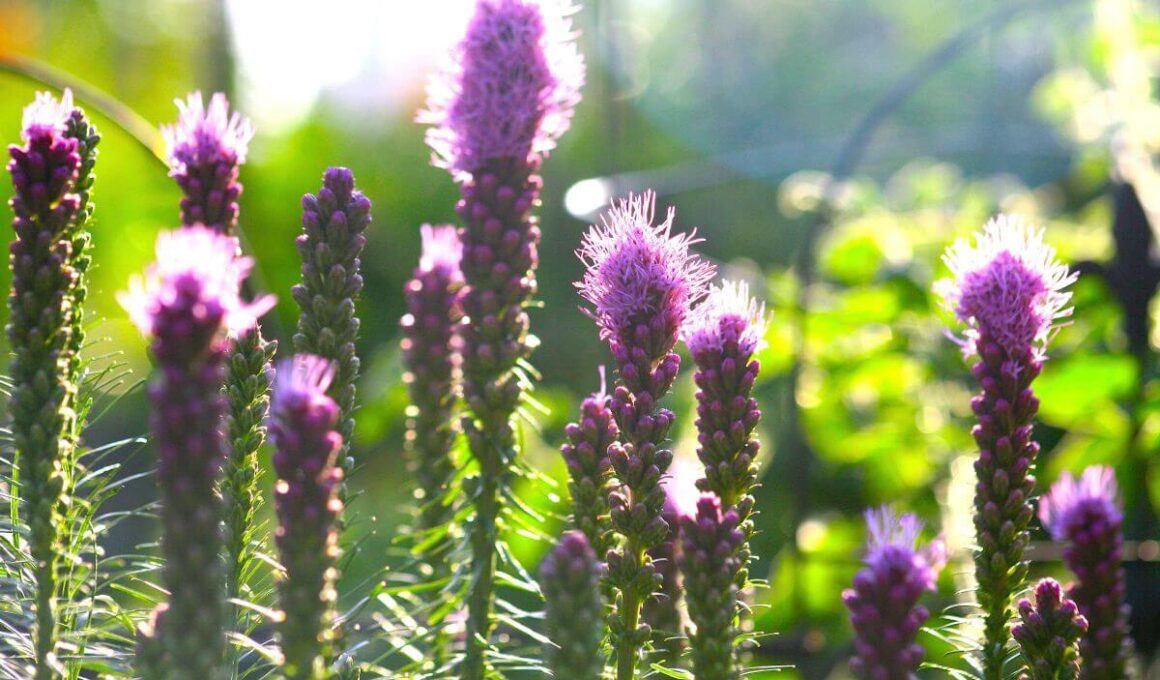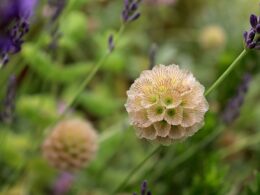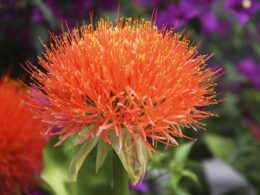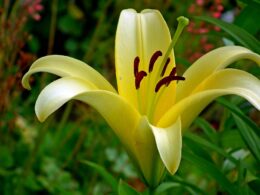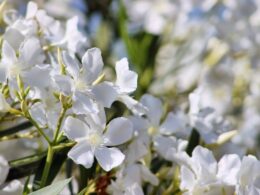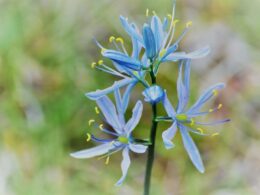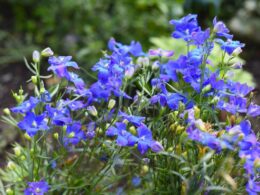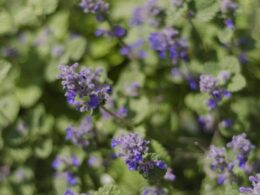About Liatris Flowers – Species, Origins and Role
Liatris is a genus of flowering plants in the daisy family (Asteraceae). This grass-like wildflower is native to North America and typically grows in moist prairies and sedge meadows. The plant gets its name from the Greek word for smooth. The most popular species of liatris flower is Liatris spicata, with common names:
- blazing star;
- gayfeather;
- Kansas gay feather
- button snakewort.
Liatris flower spikes are tall and slender, with purple or white petals. The plant blooms from midsummer to fall, and the flowers are often used as cut flowers in bouquets. Liatris is a perennial plant, meaning it will come back year after year. It’s easy to care for and doesn’t require much watering.
These flowers are known to attract pollinators, such as bees, butterflies, hummingbirds, and bumblebees. If you’re looking to attract more wildlife to your garden, liatris is a great choice! You’ll also be helping your local ecosystem, as liatris flowers are an important food source for rare moth caterpillars.
Other Uses of Liatris Spicata
Interestingly enough, blazing star was historically used in Native American medicine – most commonly, as a carminative, diuretic or stimulant. The Cherokee also used it as an analgesic for back pain, while the Menominee treated ‘weak hearts’ with the roots.
Currently, liatris is sometimes used to soothe a sore throat (by gargling an infusion) or to repel insects. It also makes a good potpourri ingredient.
Cultivars of Liatris Spicata
There are many cultivars of Liatris spicata available, so you can choose the perfect one for your garden. They come in different colors, shapes, and sizes. Some of the most popular cultivars include:
- ‘Alba’ – a white-flowering variety;
- ‘Floristan Violet’ – a light purple variety;
- ‘Goblin’ – a dwarf variety, growing up to 24 inches tall;
- ‘Kobold’ – another dwarf variety that only grows to about 15 inches tall.
Check with your local nursery or garden center to see what cultivars are available in your area. Chances are, you’ll find something you love!
Growing Liatris Flowers – When and How to Plant Liatris
Liatris is a relatively easy plant to grow. If you’re buying an already-grown plant, the best time to transplant it is in the spring. If you’re starting from seed, you can sow the seeds indoors in the fall or directly into the ground in early spring. They should germinate in 20-45 days.
When planting liatris, make sure to choose a spot that gets full sun and has well-drained soil. These flowers don’t like wet feet, although they need a lot of moisture during the first summer, before they grow strong roots. If you’re planting liatris flowers in a pot, make sure it has drainage holes.
To plant liatris in your garden, dig a hole that’s twice the width of the pot and just as deep. Gently remove the plant from the pot and place it in the hole. Fill in around the plant with soil, tamping it down gently. Water the liatris plant well.
Growing Conditions
In addition to well-draining soil and full sun, these plants need a lot of space to grow. They can spread up to 24 inches, so make sure to plant them at least 18 inches apart. Liatris is a fast-growing plant, so you’ll see results in no time!
The ideal temperature for germination is between 60 and 75 degrees Fahrenheit. If it gets too hot, the plant will go into dormancy. In cold weather, the liatris flower will die back to the ground, but will regrow in the spring. It’s hardy to USDA zones 3-9.
Propagating Liatris Plants
You can also propagate liatris by division in the spring. To do this, dig up the plant and divide it into smaller sections, making sure each section has a few roots attached. Replant the liatris sections in your garden and water them well. Only divide your plant every 3-4 years, as liatris flowers don’t like to be disturbed.
Another way to propagate liatris is by collecting the seeds in the fall. Allow the flower heads to dry on the plant, then cut them off and place them in a paper bag. Store the bag in a cool, dry place over winter. In the spring, sow the liatris seeds directly into your garden.
Care Tips for Liatris Flowers
Once you’ve planted liatris, there’s not much to do in terms of care. These plants are drought-tolerant and don’t need much water once they’re established. In fact, too much water can cause the plant to rot. During the first growing season, water them regularly, keeping the soil evenly moist but not soggy.
If you live in an area with a lot of rain, make sure to choose a spot that has well-drained soil. If it’s too heavy, amend it with some sand or perlite to improve drainage. As for fertilizer, liatris flowers only need one dose in the spring, before they start to bloom. A slow-release fertilizer will do the trick.
Pests and Diseases Affecting Liatris Plants
Liatris is a relatively tough plant and isn’t usually affected by pests or diseases. However, there are a few things to watch out for, including:
- corm and root rot – this can happen if the liatris plant is in too much water;
- snails and slugs – these pests can damage the foliage, so be sure to check for them regularly;
- leaf spot – this can be caused by too much moisture or humidity;
- rust – a fungal disease that affects liatris and other plants in the Asteraceae family;
- powdery mildew – another fungal disease that can be caused by too much moisture;
- wilt – liatris plants are susceptible to Verticillium wilt, a fungal disease.
If you notice any of these problems, be sure to take action quickly. Remove any affected liatris flowers from your garden and dispose of them. You may also want to treat the area with an insecticide or fungicide, to prevent the problem from spreading.
Liatris Plant Toxicity
Liatris plants aren’t toxic to humans or animals. However, the sap from liatris flowers can cause skin irritation in some people. If you have sensitive skin, it’s best to wear gloves when handling these plants.
Liatris Flowers – A Great Choice for Your Garden
To sum it up, liatris flowers are a great choice for your garden. They’re easy to grow and care for, and they’re beautiful to look at. Plus, they attract bees, which is always a bonus! If you’re looking for a plant that will add some color and interest to your garden, liatris is a brilliant option.
Have you ever grown liatris flowers in your garden? Let us know in the comments below!





